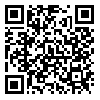BibTeX | RIS | EndNote | Medlars | ProCite | Reference Manager | RefWorks
Send citation to:
URL: http://jls.khu.ac.ir/article-1-1840-en.html
Amir Najmol Din Hassan Ibn Alaa-e-Sajzy is a Persian speaking Indian poet of the 7th century who composed lyrics in Persian language. According to many critics, the fluency, fluidity, and eloquence of his poems make him India's Saadi. His wisdom and knowledge is equal to that of Amir Khosrow Dehlavi who was his companion. He is well-known for his lyrics and since he was influenced by Saadi, passion, verve, and subtlety are noticeable in every part of his poems. By considering this point, we decided to study the imagery of his poems and after careful scrutiny, we found out that simile is the dominant technique in his poems. In this essay, for a better understanding of his ability in making two sides of a simile and determining the originality of his poetic images, we surveyed his collection in terms of structure and subject and concluded that most of his similes are of sensational to sensational type. The important point is that the allegorical type of compound simile is notable in his poems. About 90 percent of his poetic images are about the beloved and her related characteristics. Accordingly, most of his poetic images have no originality. They are borrowed from previous poets particularly Saadi. The important point is that Hassan Dehlavi by employing various linguistic and rhetorical techniques has presented these over-used images more attractively and has added eloquence to his speech, so that the reader instantly admires him, and this quality has distinguished him from other poets whose language and images are repetitive.
| Rights and permissions | |
 |
This work is licensed under a Creative Commons Attribution-NonCommercial 4.0 International License. |







